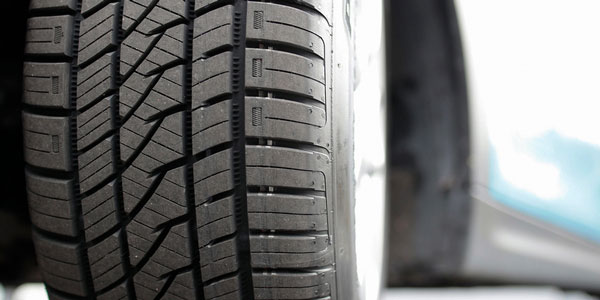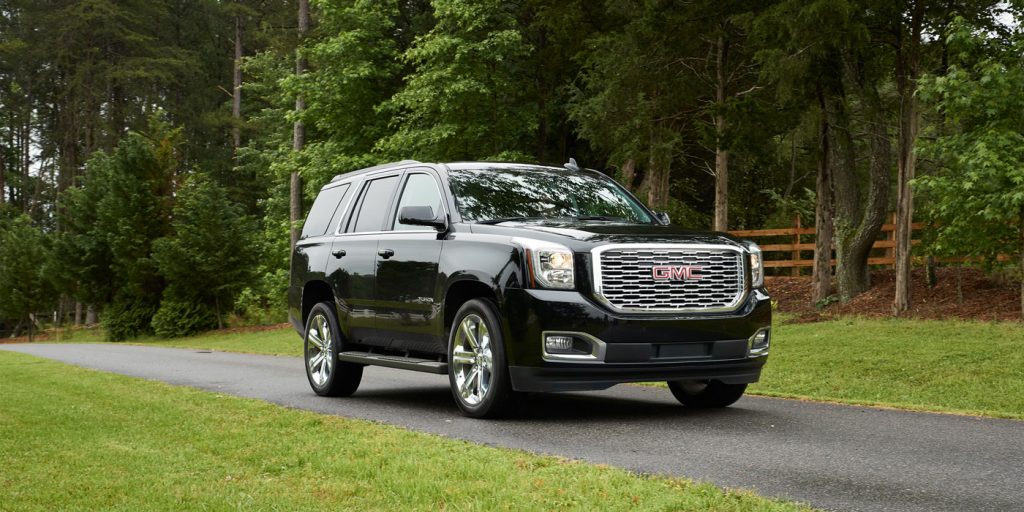All-season tires are expected to be a jack of all trades. These tires need to have a long tread life because customers are driving longer distances, but they also need to provide a comfortable, quiet ride. They should also stop and steer safely and reliably in both wet and dry conditions. And, customers are increasingly asking for better snow traction in their all-season tires. So, how are tire manufacturers able to improve on all of these demands simultaneously?
As the story goes with tire design, tire manufacturers have faced the same dilemma when making significant improvements to aspects of the all-season tire: Improving performance in one area lessens performance in another.
Will Robbins, product manager for consumer replacement tires at Bridgestone Americas, says product engineers are now discovering ways to lessen the effects of these negative trade-offs.
“Over the last decade, Bridgestone has continued to place an emphasis on further developing all-season tire technology that delivers improved performance while minimizing performance trade-offs for drivers,” Robbins says. “Historically, improving winter performance led to trade-offs in dry or wet handling. However, through the application of new features like full-depth 3-D sipes, we can add edges to all-season patterns for improved grip in snow without compromising stiffness, which maintains handling performance.”
Another way that companies are combatting these trade-offs is by creating entirely new materials for today’s tires in the all-season category.
Abhishek Bisht, global head of new markets and channels for Apollo, says, “We [Vredestein] are researching new sorts of textile and metallic materials that can provide comfort and durability, without compromising other aspects of the tire’s performance. Our [Vredestein] compounds are a result of a constant evolution of putting our best practices together, which allows us to provide the best approach on every market platform. With the implementation of new software and hardware in the design area, we are able to predict and optimize tire performance.”
Size Matters
It’s no secret that American consumers tend to prefer larger vehicles, so tire manufacturers have adapted to making tire fitments for larger rim sizes.
“In 2011, the most common sizes for tires were 15- and 16-in. rims. Now in 2019, we are seeing the trend move toward larger rim sizes,” says Jay Lee, director of product planning for Nexen Tire. “Rims over 17 inches are becoming far more common fitments, from sedans to CUVs and SUVs.”
“There are next to no 14- and 15-in. tires left, and now you have small CUVs coming with 20-inch tires,” adds Travis Roffler, director of marketing for Continental Tire the Americas.
Bridgestone’s Robbins says as the market continues to shift toward CUVs, SUVs and trucks, we will continue to see an increase in overall rim diameter, especially in trucks.
“Many of them can range from 15- to 22-in. and have varying tread widths and aspect ratios that OEMs have selected to meet their individual performance criteria,” he says. “We expect this trend to continue as the demand for CUVs in particular continues to grow and fill market niches that were previously filled by cars.”
Snow Traction is a Must
Tire manufacturers agree: Snow traction is an essential component of today’s all-season tire.
“Customers want to keep their tires as long as possible, including throughout winter, so they can save money,” says Nexen’s Lee. “Providing a tire that has reinforced snow traction while still offering great mileage is important.”
Bridgestone’s Robbins says the company has increased its focus on snow traction in all-season tires in recent years. He pointed to Bridgestone’s Turanza QuietTrack, released in April of 2019, which he says offers 44% more snow traction versus its predecessor, the Turanza Serenity Plus, without compromising performance in wet/dry handling and wear.
Continental’s Roffler agrees that snow traction is important in the company’s line of all-season tires but says if the customer’s chief concern is true snow traction, tire dealers should offer them an alternative.
“Balance is king in all-season tires, meaning you can’t give up mileage to gain snow traction or else you risk having an unhappy consumer,” Roffler says. “If your customer needs true snow traction, please sell them a set of winter tires.”
Robbins adds that when it comes to the all-season tire, dealers should take advantage of how the tire harmoniously combines so many features—including snow traction—to close the sale.
“Being able to speak to this balance is invaluable for dealers. It allows them to educate consumers on tire performance in the most challenging conditions (wet/winter) and their everyday livability (ride comfort) while providing value over time (wear),” Robbins says. “With just a few brief questions focused on the consumer’s driving style and performance expectations, a dealer can find the right product to meet or exceed a driver’s expectations.”

Choosing the Right Tread Pattern
All-season tires are typically manufactured with one of three varieties of tread patterns: unidirectional, asymmetrical and symmetrical. Choosing the right pattern isn’t just about aesthetics; it can make or break an all-season tire’s performance out on the road.
“Each type of pattern has its own strengths,” says Jay Lee, director of product planning for Nexen Tire. “For example, unidirectional tires will provide fast steering response, but can have disadvantages for comfort and noise. Asymmetrical has good handling performance, and symmetrical provides the best balance between performance and affordability.”
According to Abhishek Bisht, global head of Apollo’s new markets and channels, Vredestein focuses on driver usage conditions as well as the design of the vehicle itself when it comes to a tire’s tread pattern.
“A unidirectional design creates restrictions in tire rotation methods compared to non-directional designs. In the case of a vehicle with excessive camber, directional tires can develop premature shoulder wear which doesn’t allow them to be used further,” Bisht says. “All-season tires are also requiring a long wear life warranty with optimum dry, wet and snow performance. Such demands can be fulfilled with asymmetric design for the UHP segment. Symmetric design can be a good option for a touring application.”
Will Robbins, product manager for consumer replacement tires at Bridgestone Americas, says Bridgestone focuses on the performance requirements desired by the end user to choose a pattern direction that allows the company to meet or exceed their expectations with the least number of trade-offs.
“Typically, in tread pattern development, the more specialized the performance requirements, the more specialized or differentiated the tread pattern can be,” Robbins says. “For example, high-performance all-season tires are often asymmetric to have larger, stiffer outer shoulder blocks for improvements in dry handling. Similarly, winter-focused all-season or all-weather products can be directional to improve snow traction.”
Travis Roffler, director of marketing at Continental Tire, says the company chooses its tread patterns in part based on guidelines Continental has developed for different all-season tire categories.
“As a guideline, we usually stay with symmetrical patterns in our broadline passenger and HP tire lines and switch to the performance benefits of an asymmetrical pattern when we go into the UHP category,” Roffler says.
What’s in Store for All-Season Tires in 2030?
Tire Review asked tire manufacturers: How do you think all-season tire manufacturing/development will be different 10 years from now in 2030? Here’s what they had to say.
Travis Roffler, director of marketing at Continental Tire: “Our product development is locked in through 2025 right now, so we’re already halfway there in development. As always, we continue to work with our car manufacturer partners at OE and that gives us a looking glass into the future. Right now, smart technologies that are built into the tire itself, like tread depth sensors, run flat technology and microchip sensors for air pressure and temperature, are just a few.”
Will Robbins, product manager for consumer replacement tires at Bridgestone Americas: “As the industry continues to change and autonomous, shared and electric vehicles continue to rise in popularity, this will have a significant impact on the tire industry and how we develop new products. We are already seeing tire sizes changing to support the heavier load-carrying requirements of these vehicles and there is a demand for focus on rolling resistance to maximize range. Additionally, we expect the all-weather trend to continue, allowing consumers to purchase all-season products with expanded performance attributes to handle any condition they encounter on the road. We also expect to see an increase in enhanced mobility solutions such as run-flat, sealant and non-pneumatic tires. As we look to the future, a durable, reliable, comfortable tire won’t be enough, and manufacturers will need to engineer tires that are a smart and responsive part of the vehicle ecosystem.”
Abhishek Bisht, global head of new markets and channels at Apollo: “The customer expectation for future generations of all-season tires will demand a tire with summer characteristics in dry conditions, winter tire performance in the snow, paired with a 50,000-70,000-mile warranty. For achieving such demands, tread design is becoming more summer-oriented, while compound production is supporting the demands for wet and snow. Worldwide, rolling resistance requirements are becoming more challenging to manage CO2 emission regulations. To fulfill this demand, the tire industry will need to go through a complete transition, with future products using more advanced materials with lighter-weight technology. To produce such products, manufacturing processes require a paramount shift from current technology.”
Jay Lee, director of product planning at Nexen Tire: “Ten years from now, we will see continued growth in the CUV/SUV segment. Due to the nature of these vehicles and their extra weight, we have to design tires than can handle the extra weight transfer. Particular attention must be paid to the tire profile, pattern design and compound/structure to ensure optimal grip and handling while preventing abnormal wear. These tires are also likely to be true all-season tires since snow traction and safety in all elements is increasingly important.”
Check out the rest of the April digital edition of Tire Review here.














